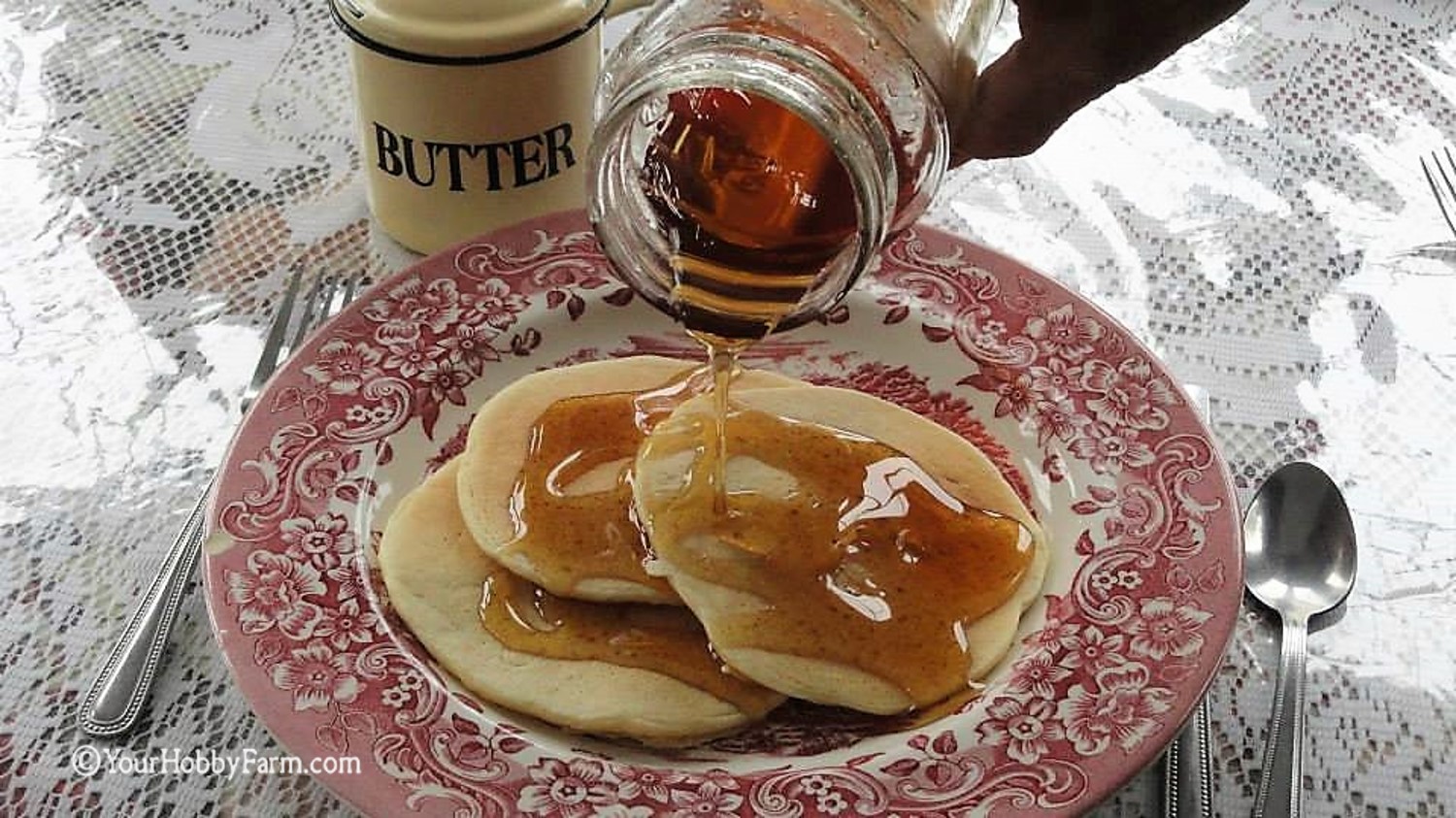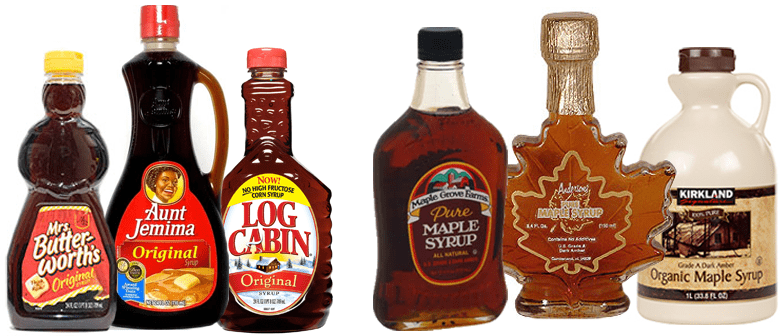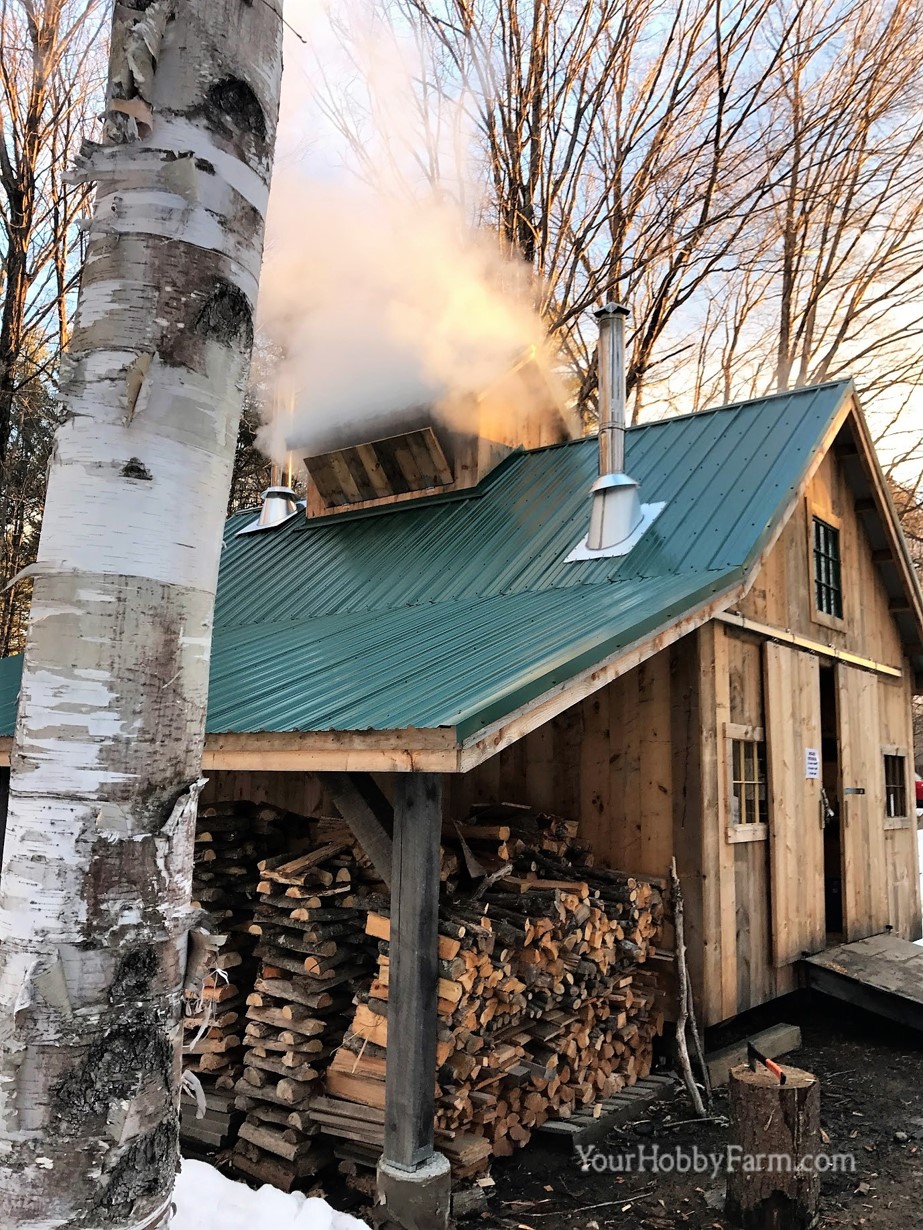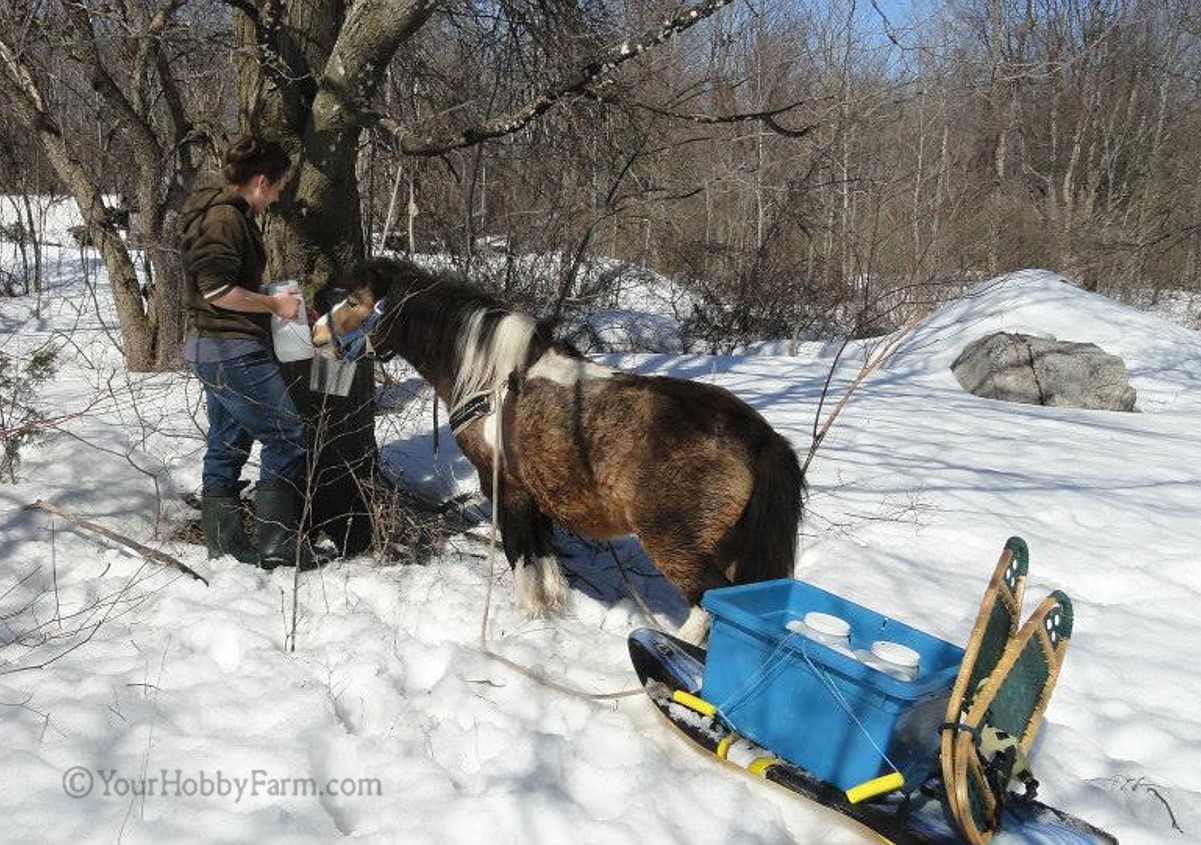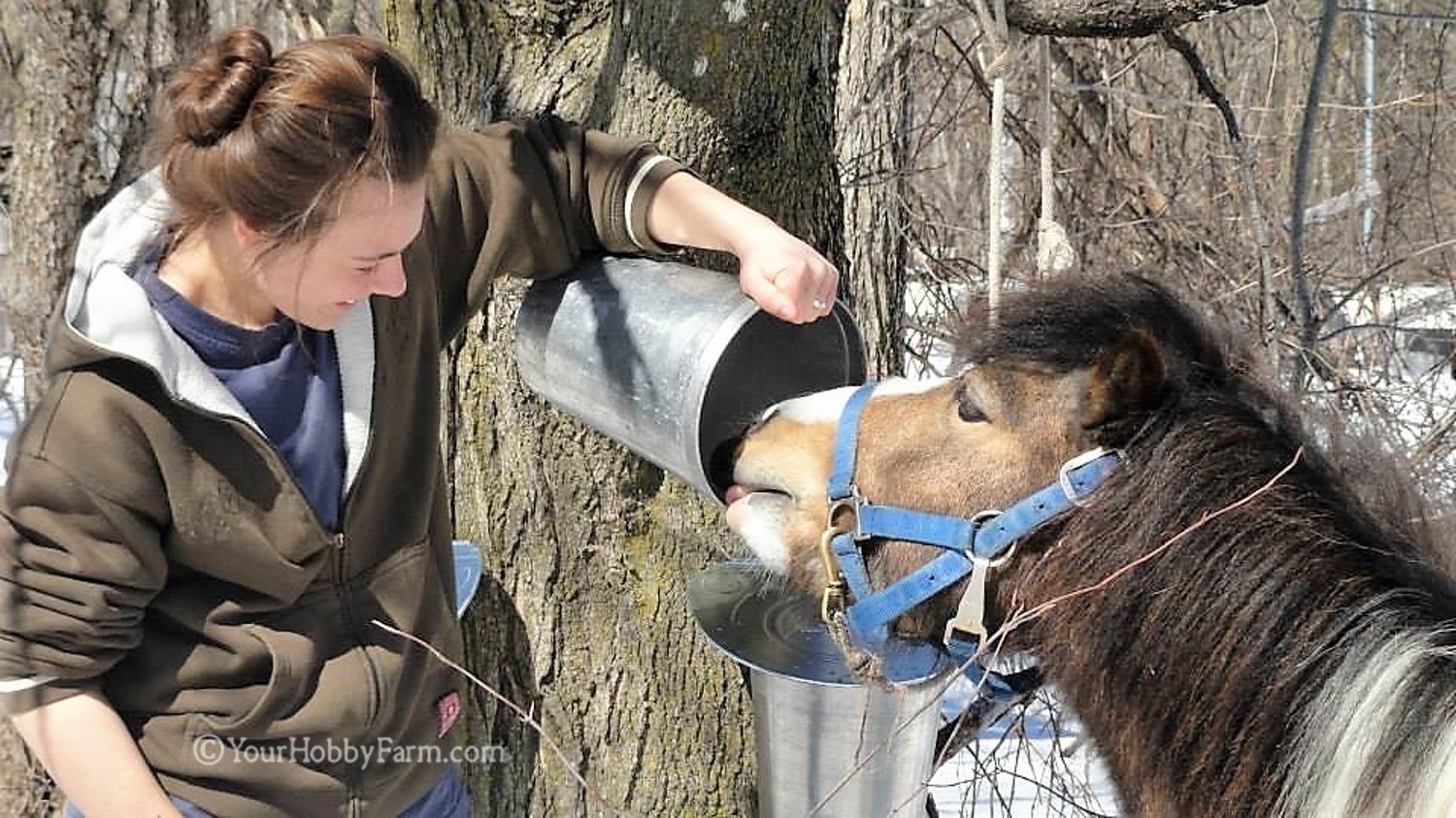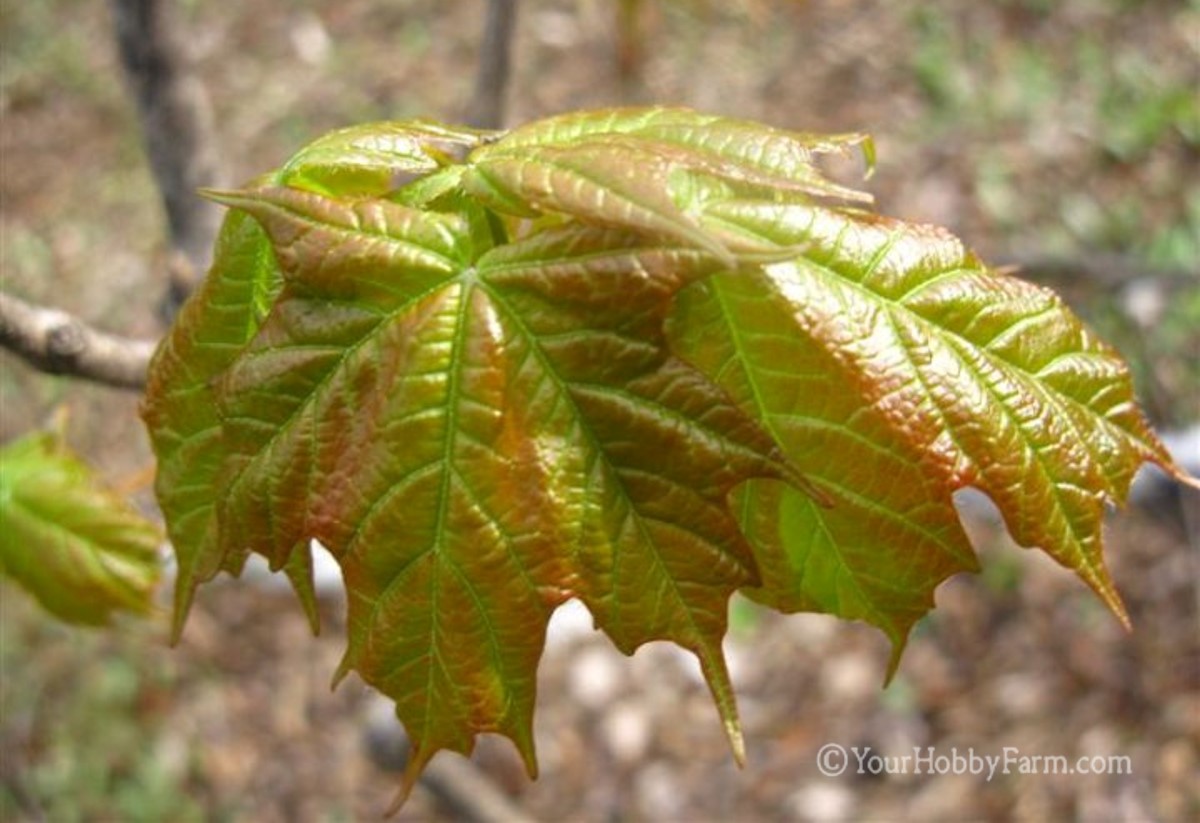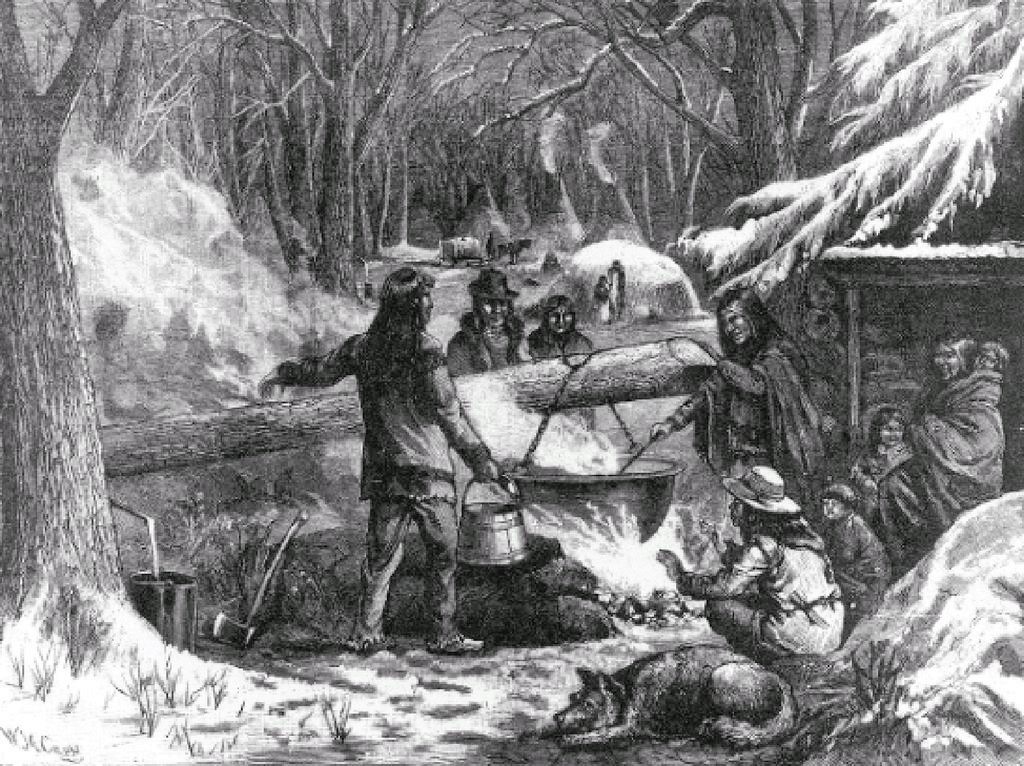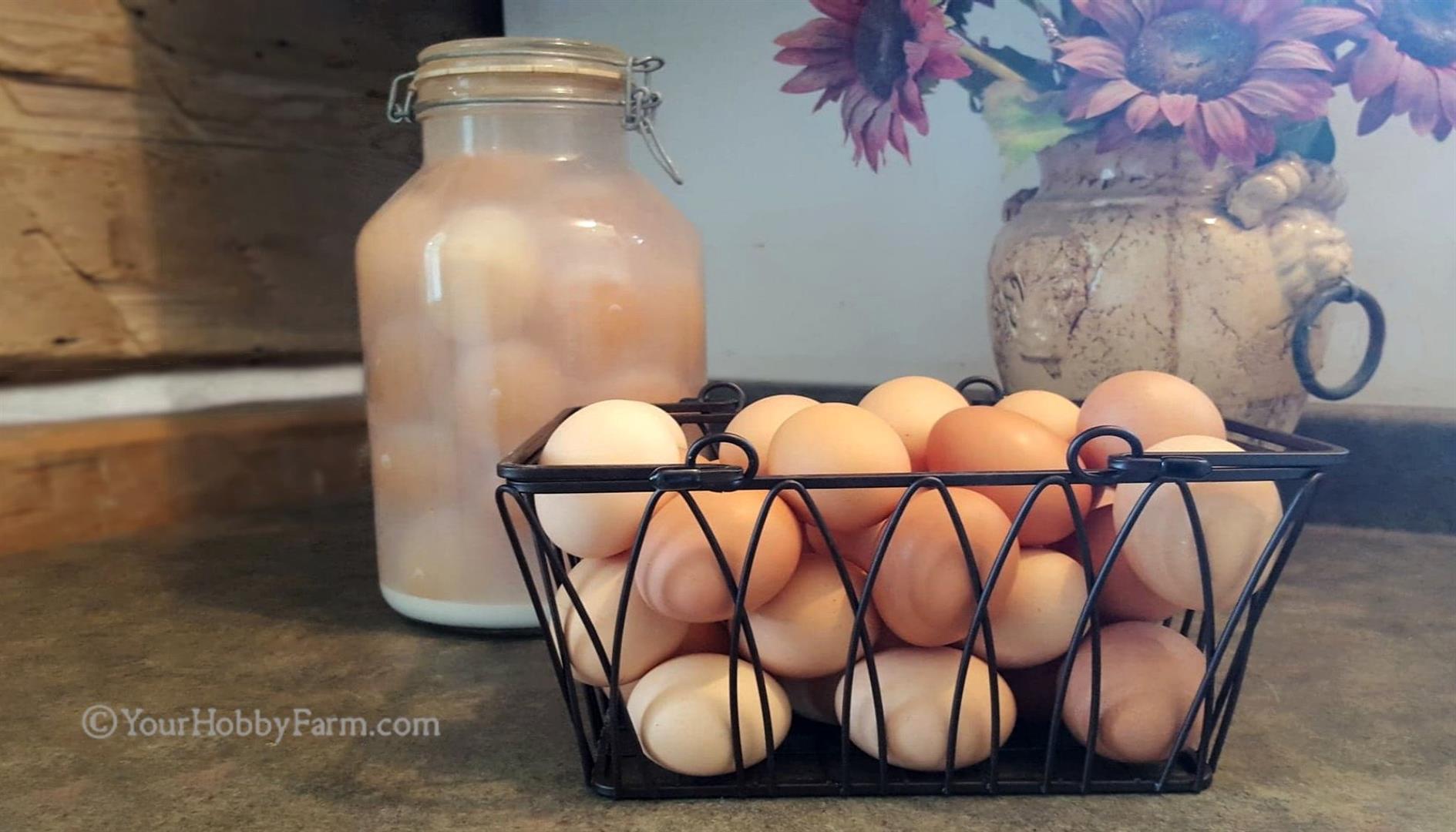Natural, Healthy Maple Syrup
Hey friends and followers! We're changing our website address from YourHobbyFarm.com to HomesteadJoys.com.
With ongoing homestead responsibilities, this transition may take some time. Save our New Logo and QR code for easy navigation! We’d love you to join us in our journey!
 Homestead Joys Logo
Homestead Joys LogoMmm, there's nothing quite like real maple syrup! We're not talking about the imitation pancake syrup, but the real stuff derived from sugar maple trees growing in northeast USA and Canada.
What Is Maple Syrup?
Sweet, rich, and very smooth in texture, this naturally derived sweetener is made solely from the sap harvested from sugar maple trees that grow wild in the woods in various northern regions.
 Enjoying the smooth sweetness of pure maple syrup. Image: Unsplash by Nadine-Primeau
Enjoying the smooth sweetness of pure maple syrup. Image: Unsplash by Nadine-PrimeauIf you've never tasted it before, you may be wondering what genuine maple syrup actually tastes like. While flavors can be challenging to put into words, we'll give it a try...
Most people who've tasted it would agree that maple syrup is simply sweet, yet delightfully complex with several distinctly discernable flavors and scents. It imparts a rich smooth taste, somewhat rustically perfumed with a bit of maple woodsy-ness. It's rather caramelly, and you may detect a slight nutty flavor, with perhaps a tiny hint of vanilla and a slight trace of wood smoke derived from the way it's processed.
About 40 gallons of sap, boiled down, will yield 1 gallon of maple syrup. After evaporation, maple syrup contains about 67% natural maple sugar.
The color and flavor actually change a bit as the season progresses. At first, it's light flavored and sweet. Then as the weeks pass, the flavor deepens into a more of the classic maple flavor. And at the end of the season, by the time the leaf buds begin to pop out, the sap begins to taste a bit bitter. We talk more about maple syrup grades here.
Pure Maple Syrup vs. Pancake Syrup
If you're wondering about the comparison of maple syrup vs pancake syrup, all you need to do is have a look at the ingredient lists on the label and you'll see a difference! Pancake syrup is usually made from high fructose corn syrup, sugars, water, and perhaps some maple flavoring, which may or may not be made from maple.
They may have similar tastes. But artificial flavorings are made from synthesized substances including petroleum and do not contain maple. Some 'natural' maple flavorings may or may not contain maple.
Some natural maple flavorings are made from hickory. This goes back to at least the 1880s when Josiah Daily patented his method of deriving maple flavor from hickory bark. Fenugreek is also used to simulate a maple taste. And another process dates back to the 1940s when they learned to manipulate amino acids in sugars to create maple-like flavors.
Real maple syrup is definitely the better choice than pancake syrup. Real maple syrup has no other ingredients. It's pure, natural concentrated maple sap.
Where Does Pure Maple Syrup Come From?
Among the diversity of the northern hardwood forest grows the sugar maple trees. In the fall they splash the hillsides with vivid brilliance of reds, oranges and golds before shedding their leaves. In the springtime they flow with sweet sap before new leaves pop out.
We're told that North America is the only part of the world in which sugar maple trees grow. They are native to the beautiful deciduous forests of eastern Canada and the United States.
In fact, maple trees are one of the most important trees in Canada. Maple leaves have been included in the coat of arms of Canada, and the Canadian flag depicts a maple leaf as a national symbol.
Although a large variety of other types of maple trees grow in Europe, Japan, and various places around the world, in most cases, these locations don't have the proper weather conditions needed to produce the necessary amounts of sap needed to make syrup.
Harvesting maple syrup was first a part of indigenous life and culture and has long been part of Canadian and northeastern American culture as well. From backyards and small farms to large commercial operations, those who live in this region herald the approach of spring with festivities and celebrations, feasting on traditional foods served at each local 'Cabane à Sucre'.
Canada produces over 70% of the world's pure maple syrup. Around 90% comes from the province of Quebec where approximately 7,989,000 gallons are produced annually. Ontario, Manitoba, and several Canadian Maritime provinces, as well as several States in America also harvest maple syrup.
Local weather is the most important factor in the outcome of the maple syrup harvest. The sap flow in the maple trees relies on the day and night temperature fluctuation.
The cycle of warming days and freezing nights causes the sap to begin to move up the tree to the stems. Maple syrup harvesters have observed that the quantity as well as quality of their maple syrup fluctuates with climate variability.
If you're interested in identifying sugar maple trees, we've provided this sugar maple tree identification information to help you recognize them.
Harvesting Maple Syrup
Whether you have access to a hardwood forest where maple trees grow, or have a big old maple tree in your back yard, you can experience how to get maple syrup yourself! It takes some time, effort, and a bit of know-how, but the end result is definitely well worth the effort!
When is maple syrup season? In northeast North America, maple syrup season takes place starting at the end of February and extending until April, depending on location, climate and weather. There is no exact date when harvesting maple syrup begins.
We welcome maple syrup time! Being aware of the clues in nature tells us when the season is beginning.
How is maple syrup made? Maple syrup is made by boiling down the slightly sweet sap of the sugar maple tree until much of the water evaporates, creating a thick syrup with a high concentration of sugar.
Maple sap fresh from the tree is approximately 98% water and 2% sugar. After maple sap has been boiled down to syrup, the result is only 33% water and 67% sugar.
We have a whole page of explaining the details of Harvesting Maple Syrup. You'll learn how to identify sugar maple trees, when to tap maple trees, the tools for tapping maple trees, how to tap a tree, where to tap maple trees... We'll show you how to collect maple sap, what is important when storing maple sap before boiling, boiling maple sap into syrup, and more. We're sure you'll appreciate the sappy science of making maple syrup!
Harvesting maple syrup is a great family activity! it is work, but be prepared to have fun and adventures in the process. Here on our homestead, one season we managed to get both of our tractors stuck in the snow, as well as our 4-wheeler, and we ended up recruiting some hooved help! It was Prince to the rescue! Our miniature stallion helped to haul the containers from tree to tree for us as we emptied the sap buckets. And in the process, he discovered that he really enjoyed the taste of maple sap!
Prince, our little miniature stallion and willing assistant
in harvesting maple syrup.
Journey with us through this step-by-step process of how to make maple syrup, all the way to cleanup at the end. And, if you're interested, you'll also find some interesting questions and answers about maple syrup, and the process of making it, on our Real Maple Syrup FAQs page.
If you're discouraged thinking that sugar maple trees don't grow where you live, don't give up hope about making your own syrup! You'll be glad to discover that there are many types of maple trees as well as several other species of trees that can be tapped for sap to make syrup!
History of Maple Syrup
Maple syrup is among the oldest natural food products produced in North America. Indigenous peoples living in northeastern North America were the first known to have produced maple syrup and maple sugar.
Various legends exist explaining the details of the initial finding, but in reality, no one even knows which tribe first made this sweet discovery. But through aboriginal oral traditions, these secrets were passed down through the generations. Long before Europeans arrived, aboriginal tribes had developed rituals around sugar-making, celebrating the Sugar Moon with a Maple Dance.
It was a kindness from the Indians to the European newcomers to teach them the process of making maple syrup and sugar as they had done for centuries. If interested, you'll find more fascinating information on maple syrup in Native American history here on our history of maple syrup page.
Is Maple Syrup All That's Made from Maple Sap?
Besides the famed maple syrup, there are other maple products that are often made and enjoyed and part of the culture where maple syrup is harvested yearly.
Tire d'érable sur la neige, or as we say in English, maple toffee on snow, is very much a part of the maple syrup celebration in Canada. Maple toffee is candy made by boiling maple sap beyond the point where it would form maple syrup, but not so long that it becomes maple sugar. It is part of the traditional way of life in early spring in Québec, Eastern Ontario, New Brunswick and northern New England.
Maple butter, also known as maple cream, is another delicious pure maple product. Maple butter is not maple flavored butter nor butter sweetened with maple syrup. It is a confection made from maple syrup by heating the syrup to approximately 230°F (or 112°C), cooling it to around 125.6°F (or 52°C), and beating it until it reaches a smooth consistency. It is wonderful spread on toast at breakfast time.
Maple sugar is another traditional sweetener from Canada and the northeastern United States. Maple sugar is simply maple sap that has been cooked a bit longer than is needed to create either maple syrup or maple toffee. Then it's stirred with a paddle until it forms a granular sugar. Maple sugar can be kept indefinitely which was very convenient centuries ago.
Maple beer is another product made out of maple sap. It's created by fermenting the sugar in maple syrup to replace malt and other components. Craft brewers create an ale with noticeable maple tones that is often reinforced in sweetness with residual sugars. Maple liqueurs and various other alcoholic products are also made from maple syrup.
And there's more! Thinking outside of the box, having discovered other beneficial properties, creative people have made maple syrup soaps, lotions, moisturizers, candles as well!
Delicious Ways to Use Pure Maple Syrup
When we think of maple syrup, a stack of hot, buttered pancakes often comes to mind. It's a classic combo. But there are many other ways to use maple syrup! And some may surprise you! Maple syrup does wonderful things for many other foods!
It adds a hint of rustic sweetness to old favorites like Apple Crisp or Pumpkin pie. It sweetens Strawberry Rhubarb pie nicely. And for a special dessert after a lovely dinner, Maple Panna Cotta is delightful!
Maple syrup adds a subtle sweetness to cookies like Maple Oat Cinnamon Cookies and extra rich gooiness to Maple Cinnamon Rolls! You can use it to add sweetness to many baked goods!
Savory dishes are also enhanced by maple syrup. Foods like ham, bacon, and baked beans are often flavored with maple syrup. The rustic, sweet flavor of maple pairs nicely with grilled salmon and pork tenderloin. It's used in barbecue sauces and meat marinades. Maple syrup is delicious with butternut squash, sweet potatoes, carrots and other veggies. Maple Roasted Asparagus is delightful, and Maple Roasted Brussels Sprouts with Bacon is a wonderful combination of flavors.
Maple Syrup Season Celebrated
There's little wonder that maple products and flavors have become interwoven into the traditional culture in areas in which maple trees thrive.
A visit to one of 'les cabanes à sucre' (the sugar shacks) in the area would convince you of that! A hearty all-you-can-eat feast awaits when visiting a sugar shack. It usually includes soupe aux pois (a thick yellow pea soup), fèves au lard (baked beans), cretons (a spread made with minced pork and spices), oreilles de crisse (deep-fried pork jowls), omelets or scrambled eggs, fried potatoes bites, ham and sausages soaked in maple syrup, tourtière (a traditional meat pie), pickled beets, homemade red or green fruit ketchup, crêpes... And, of course, a jug of maple syrup which often ends up being poured over everything on the plate! Mmm, maple syrup!!
Footnotes: 1 The American system call these Grade (A, B and C) whilst the Canadian system uses number (No.1, No.2 and No.3).

We'd Love to Hear About Your Maple Syrup Experiences
and Favorite Ways You Use It!
Have you made maple syrup or other maple products? Do you have maple syrup adventures or memories that you'd like to share? How about favorite recipes that you use with maple syrup? If so, we'd love to hear about it! Let us know in the form below, and please share your pix! It's fun to learn from one another!
Just click into the title box below and go from there. Be as wordy and descriptive as you want! Don't be shy about sharing maple syrup knowledge, your experiences, or things you've learned... There's plenty of room for your story on our website. And don't forget to share photos!
Then when published, you can share your story and pictures with your friends through 'your page' here on YourHobbyFarm.com!
wc2122 - 125385 27997 4479 (02-15-21)
Translate This Page!
Traduire Cette Page!
¡Traduzca Esta Pagina!



Piping Rock©
Bringing you the highest quality In hundreds of health care and life-enhancing natural products at the
lowest cost to you!
high reviews, crazy deals,
happy, healthy customers!
Click here and save today!
Business Appreciation
* This website is not affiliated with
Piping Rock

Supporting our local feed mills
Meunerie Alexandria Milling
613-525-1973
Great Products • Great Prices
Great Service
Click the pic for their
facebook page!
Meunerie Alexandria Milling
Established in 1962 by The Massie Family
Email: Alexandriamilling@hotmail.Ca
475 Massie Crescent
Alexandria, Ontario, Canada
~~~
Small Business Appreciation
* This website is not affiliated with
Meunerie Alexandria Milling

